This article was co-authored by Anthony Stark, EMR. Anthony Stark is a certified EMR (Emergency Medical Responder) in British Columbia, Canada. With over 11 years of experience, he has worked as an industrial medic and provided urban and rural paramedic services. He currently works for Mountain View Safety Services and previously worked for the British Columbia Ambulance Service. Anthony has a Bachelor of Engineering in Electrical, Electronics, and Communications Engineering from the Georgia Institute of Technology. He has completed the EMP Canada EMT Course and Swiftwater Awareness Training associated with the British Columbia Ambulance Service.
There are 8 references cited in this article, which can be found at the bottom of the page.
This article has been viewed 103,037 times.
The first rule in first aid is to do no harm. This seems like an obvious rule of thumb, but it is one that often goes against what every fiber in your body is telling you to do. In the event of severe trauma to the head, neck or spine, your instinct is to move the person into a more comfortable position or get them to a safer area, but moving them can injure them to a greater extent. If the injured person is in immediate danger or is ready to be placed in an ambulance and sent to the hospital, you can "log roll" them onto a spinal board if you understand and can execute the procedure..
Steps
Log Rolling an Injured Person
-
1Look for signs of a spinal injury. If you suspect a spinal injury to the back or neck of a person in need of help, do not move him or her if there is no immediate need to (see below for reasons). Assume an injured person has a spinal injury if: they are unconscious or losing consciousness; they complain of severe spinal pain (neck of back); they can't move their neck or limbs; they feel weakness or numbness in their limbs; they lose control of their bowel or bladder; their spine is positioned oddly of crooked; they've fallen from a significant height or been hit by something substantial.[1]
- Permanent paralysis and other serious life-threatening complications can result from moving a person with a spinal injury — even a mild one initially.
- Assume a spinal injury whenever a person is hit by a car or falls from a height greater than 10 feet. It's always better to error on the side of caution.
-
2Begin CPR if the injured person is not breathing. Regardless if you think an injured person has a spinal injury or not, you need to administer CPR (cardiopulmonary resuscitation) if they are unconscious and not breathing. If the injured person shows no signs of circulation (no wrist / neck pulse, breathing, coughing or movement), begin CPR immediately with at least 30 chest pumps and then a couple of breaths into their mouth. However, don't tilt the head back to open the airway (as is recommended with CPR) if you suspect a neck injury.[2] Instead, use your fingers to gently grasp the jaw and lift it forward before giving emergency breaths.
- Repeat this CPR cycle (30 compressions / 2 breaths) until resuscitated or until medical help arrives
- If a person has no heart beat and is not breathing they are already considered dead, so resuscitating them is a higher priority than avoiding a potentially worse spinal cord injury.
- Before administering CPR, call 9-1-1 or an emergency number to get medical help on the way as soon as possible.
Advertisement -
3Administer basic first aid if the person is bleeding. If an injured person is bleeding, then provide as much basic first aid as possible without moving their head or neck.[3] Rinse away any dirt and debris from wounds with clean (preferably distilled) water. Put pressure against any bleeding wounds with a clean (preferably sterilized) cloth or bandage. Leave any large puncture items in the wound as removing them may lead to much more bleeding.
- Splinting any broken bones should only be done by trained professionals or in cases where medical help may not be available for long durations.
- Keep the injured person warm (with a blanket or a jacket) and hydrated to prevent or delay them going into shock.
-
4Determine how many bystanders are available to log roll. If you determine the injured person absolutely needs to be rolled on their side in order to be moved or to prevent choking, then determine how many people are around who want to help. The more people around (up to five), the better because more hands can stabilize the injured person while log rolling them and prevent unwanted spinal motion.[4] If you're the only person to log roll, then you better have an excellent reason to proceed instead of waiting for paramedics to arrive.
- A minimum of at least two people are needed to log roll an injured person in an emergency — one to stabilize the neck / head, and one to stabilize the lower spine / pelvis.
- Five or six people is the ideal number to log roll in most situations in order to stabilize the neck / head, arms, low back / pelvis and legs.
-
5Get positioned over the injured person. Whoever emerges as the leader should position themselves at the injured person's head (assuming they're already on their back) and coordinate the timing of the log roll. The person at the head stabilizes the neck (cervical spine) by firmly grasping the side of the head over the ears, lower jaw and at the base of the skull.[5] Others should hold and stabilize the arms / thoracic spine, lumbar spine / pelvis and legs around the knees.
- If the injured person is still conscious, keep them still and assure them they're going to be okay to keep them calm.
- If you have any towels, blankets or extra clothes around, wrap them up and place them on both sides of the neck to provide support and prevent movement.[6]
- Explain to any inexperienced helpers what you're about to do (log roll) and how to do it. These uninjured volunteer helpers may also need some calming down.
-
6Get the spinal board or sheet / tarp ready. If you are log rolling the injured person onto a spinal board or sheet / tarp in order to be moved, then get it ready by positioning it right next to the side you're planning on lifting off the ground. Remember that you'll need an extra person to push the spinal board or sheet under the victim once they are on their side.
- A helper who's stabilizing the injured person cannot let go before the log roll is complete.
- Determine what side is best for the injured person to be rolled onto. This might be determined by the landscape of where the person has fallen or if they appear to have a broken arm of dislocated shoulder.
- A spinal board should be designed for carrying a person towards an ambulance. If you have to make one, make sure its flat and can support at least a few hundred pounds — thick plywood works well.
-
7Coordinate the log roll. The leader should coordinate the timing of the roll once everybody is in position and stabilizing their designated body segment. Announce on the count of three that everybody should slowly roll the person onto an agreed upon side (right or left). At the end of the count, slowly roll the person without completely lifting them off the ground.[7] Stop while they're on their side and don't let them roll onto their stomach, which can torque and extend the spinal column.
- Ideally the victim's head and neck should remain in a straight line axis with the rest of their spine and pelvis during the log roll.
- Research shows that it's best to keep a person's arms pinned against their sides (palms against their thighs) while log rolling them — it reduces spinal movement.[8]
-
8Position the spinal board / sheet underneath and lower the person. Once the injured person is on their side, have someone quickly push the spinal board or sheet directly underneath them. Position it so that the victim's body will completely cover the board and be as close to its center as possible. The head and feet should eventually be secured to the spinal board (ideally), so don't leave any of the body hanging over the edge. Once the board or sheet is properly positioned, roll the person onto it carefully, beginning on the agreed upon count again.
- The person at the top of the injured person should continue to hold the head and support the cervical spine until the emergency medical personnel arrive with a special immobilizing neck support / collar.
- The injured person can now be transported to a waiting emergency vehicle (ambulance or helicopter) or away from danger.
- At least two strong people are needed to lift and carry an injured person on a spinal board, although four is ideal.
Knowing When to Log Roll
-
1Place a spinal board underneath. A log roll involves partially rolling a person (usually from their back to their side) so that a long spinal board can be wedged underneath them.[9] Once the spinal board is underneath the injured person and they are laying on their back, they can be lifted by paramedics and carried to an ambulance or other emergency transport vehicle. Transporting a person on a spinal board minimizes movement to their spine and reduces risk of further injury if they have a spinal injury.
- The log roll obviously involves some movement to the spine, but it's the safest way to transfer a person onto a spinal board if there is only a few people available.
- If there's at least five other people around able to help you, doing a 6-person lift procedure onto a spinal board is considered a little safer than a log roll due to less impact on the spinal column.[10]
-
2Use a sheet to transport. Another reason to log roll an injured / unconscious person is to remove them from immediate danger or threat of further injury if they remained in the same spot. If emergency medical personnel aren't present with a spinal board and you need to transport a person away from danger, log roll them to the side and place a sturdy sheet, blanket, tarp etc. under them, then lift it and carry it with the injured person on their back.
- You'll need at least one other person to help you carry it and preferably three others.
- Reasons to move an injured person before paramedics arrive include: proximity to fire, exposure to cold, risk of flooding, surrounding violence and/or potential danger from animals.
- If you're all alone with an injured person and absolutely need to move them, then place a sheet / tarp under them and drag it along the ground towards safety — it's not ideal, but likely the best method.
-
3Prevent choking on vomit or blood. Another reason to log roll an injured / unconscious person is to prevent them from choking on their own blood or vomit.[11] People who bite their tongue or lose teeth during an accident or trauma have a significant risk of choking on their blood, particularly if they're unconscious and laying on their back. The same holds true for vomiting, which is a common occurrence when you feel severe pain and have lots of adrenaline suddenly released into your bloodstream.
- Rolling a person onto their side allows for all liquids (blood, vomit, mucus, saliva) to safely drain from their mouth, instead of down their trachea and into their lungs.
- A person positioned on their side is also less likely to bite their tongue or choke on it, compared to laying on their back (supine).
References
- ↑ http://www.mayoclinic.org/first-aid/first-aid-spinal-injury/basics/art-20056677
- ↑ http://www.mayoclinic.org/first-aid/first-aid-spinal-injury/basics/art-20056677
- ↑ http://www.mayoclinic.org/first-aid/first-aid-spinal-injury/basics/art-20056677
- ↑ https://www.youtube.com/watch?v=5FUnepktYxE
- ↑ https://youtu.be/5FUnepktYxE?t=73
- ↑ http://www.mayoclinic.org/first-aid/first-aid-spinal-injury/basics/art-20056677
- ↑ https://youtu.be/5FUnepktYxE?t=81
- ↑ https://www.researchgate.net/publication/231745839_Thoraco-Lumbar_Spinal_Instability_during_Variations_of_the_Log-Roll_Maneuver
- ↑ https://youtu.be/9M1GOIzeF3s?t=223
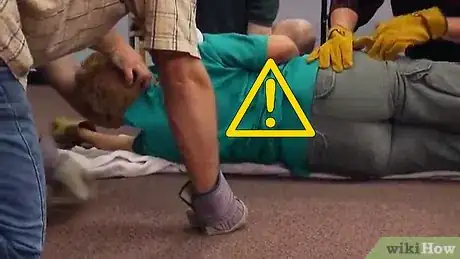
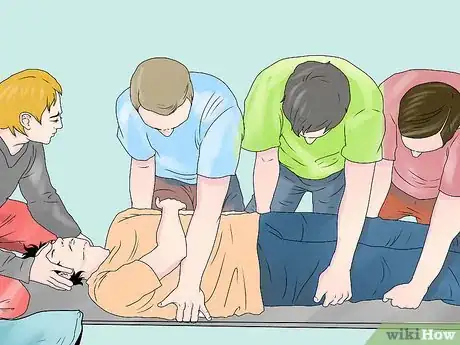
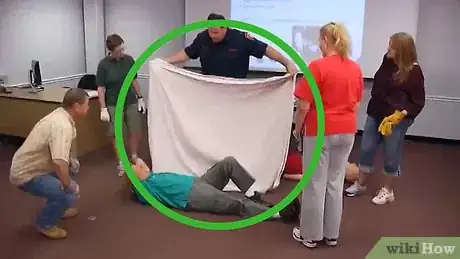











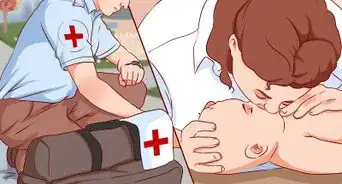


-Step-6-Version-4.webp)








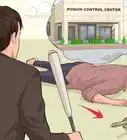

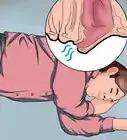




































Medical Disclaimer
The content of this article is not intended to be a substitute for professional medical advice, examination, diagnosis, or treatment. You should always contact your doctor or other qualified healthcare professional before starting, changing, or stopping any kind of health treatment.
Read More...